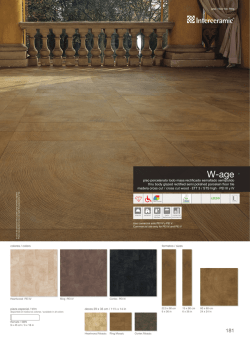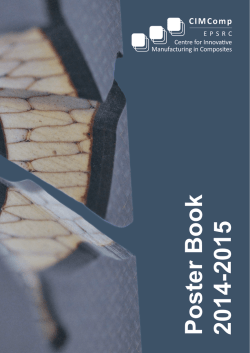
Comparative histochemistry and cell morphology of sapwood and
REVISTA DE BIOLOGIA TROPICAL 1006 tyloses help to avoid colonization and method was used to stain differentially cellulose development of many kinds of fungí which can (bIue) infect the tree. chlorine-iodine This paper deals with the histochemistry of and lignin (green-blue). method was TIle zinc employed to contrast ceUulose (blue to violet) from lignin ceUular components and the morphology of (yeHow tyloses in heru.iw0od and sapwood oí a tree of chloride method was used to reveal the presence to orange). The tannic acid-fenÍC G. sepium. The relationsrup between the types of calcium pectate (black to blue-black). The of chemical components and sorne properties of presence of sterified pectins was tested by the the wood of this tree is also discussed. alkaline hydroxylarnine hydrochloride method. The phloroglucinol method was used to specifically stain lignin (red to violet)o Phenolis; compounds were specifically stainea by MATERIALS MTD METHODS A healthy individual tree of G. sepium, 10 the cathechines method. vainillin and leucoanthocianidines are seen as red deposits, m height, with a straight stem 25 cm in whereas diameter at a height of 1.3 m, was coHected in a deposits. The stained sections were mountcd in theÍr oligomers are seen as dark tropical rain forest at the Municipio de Benito glicerol or synthetic resins. Photographs were Juárez in taken fram fresh and mounted slides. Puerto MoreIos, Quintana Roo, México. The botanical voucher is regístered with number vessels and their diameters were meassured with Metropolitano of the Universidad Autónoma the help of a mícrometric ocular piecc. Pits of Metropolitana Iztapalapa (UAMIZ) and wood vesse1s samples meassured as in UAMIZ-M39 the The thickness of the cell wal1s of fibres and Herbario 26106 in the Herbario Metropolitano's wood coHection. and vessel-ray following parenchyma the were specifications of lAWA (1989). Morphological description of The tree was cut at 30 cm from the ground tyIoses and crystals were made according to level and two stem sections, 1 m long each, were obtained. From the upper face of the frrst lAWA (1989), and Saitoh et al.(1993). At least 50 individual measurements were made for every section, that is at 1.3 m heíght, a 2 cm section character described. was cut from this, Ixl cm cubes were obtained from the sapwood and heartwooo. The cubes were boiled in water during six hours. Next, RESULTS they were treated in a microwave oven in 50% glicerol, during 8 minutes at medium powef. After this procedure, tangential, radial and cross sections were obtained al thicknesses ranging from 8 to 15 �lm. Starch and lipids were revealed by the method of Johansen (1940). The Fibres. The cell walls of sapwood fibres were thick (lO±0.5 !lm) and, besides ceHulose and lignin, only a light reaction for sterified pectins was detected, whereas heartwood fibres other histochernical methods used in this study were thicker (l2±O.9 !lm) to stain heartwood and sapwood sections are higher amount of lignin and sterified pectins lF). Dark deposits and contained a described in detail by Krishnamurty (1988). (Fig. Lugol and Sudan m were employed for detection condensed tannins were identified inside correspondíng of starch and lipids. The Toluidine Elue o lumina of heartwood fibres (Table 1). to the TABLE 1 Comparative chemical compositíon in cells of sapwood alld heartwood of Gliricidia sepium Reacti v e TRI TR2 TA-FCh ZCI AH Vi Ph V2 Lugol Sudan + +++ + +++ Sapwood cells Fibres Vessels Tylose 1 Tylose 2 Axi al P Rays ++++ + ++++ ++ +++++ ++ ++++ ++++ +++ + ++ +++ +++ ++++ + ++ ++ +++ +++ + ++ + ++ + + ++ ++ + +++ mi +++ ! � Heartwood cens Fibres Vessds Tylosc 1 Tylose 2 Tylose 3 Axial p Rays mI vessd mi fibres mi tyloses mI paren. .o � +++++ +++++ ++ ¡:, :-;CIl +++ + +- ++++ +++ + + ++++ +++ +++++ + + ++++ +++ +++++ +++++ +++ +++++ +++++ +++ +++++ +++++ ++ ++++ +++ +++++ +++++ ++ ++++ +++ i 2- ++++ +++ +++++ +++ +++++ +++ +++ +++++ + = I o "'" TBI. Tolui dine blue for Iignins. TB2. Toluidine bine fOí- cdlulo se . ZCi. Zinc-chlor-io dine for cellulose. TA-FCh. TannÍc a c i d · ferric chloride fOi CalciUlIl pectates. AH. Alkalinehidroxylamine for sterified pectins. Ph. phloroglucinol. V!. Vainillin fOf dark deposits. V2. Vainillin for red deposits in lhe lunúna. Tylose 1 scIerotic tylose. Tylose 2 co mmon tylose. Tylose 3 common tyiose with crystals incIllded. Plus symbols mean: + vely ¡ight, ++ light, +++ medíllm, ++++ strong, and +++++ vcry strong rcacHons. = § Q.. == � �. � '" � E' ;;¡ Table 2. Wall thickness of vcsselsand tyloscs from sapwood and heartwood ----Moderately largc vessels Regular vessels Sapwood 13 ± 1.l1.Ul1 Heartwood 16 ± 0.9 11m 7.5± 0.5 I1ID Selcrotic tyloscs Cornmon tyloscs 35 ±2.7 11m 5 +0.6 11m 8±41ull 37.5 ± 3 �lIn 8±O.4,.un Wall thickness p< 0.05 < § 1008 REVISTA DE BIOLOGIA TROPICAL Fig. IA-D: Sapwood. A. Intervessel pittings. B. COffilTIOn tyloses (et). C. Stareh granules in axial parenchyma. D. Sclerotic tyloses and crystal (st). Fig. lE-J: Heartwood. E. Lipid inclusions in radial parenchyma. F. Fibres. G. Vessels of two different sizes showing common and sclerotic tyloses. H. Longitudinal vessel showing tyloses. I. Red (r) and dark (d) deposits in axial parenchyrna. J. Crystals in axial parenchyrna. REVISTA DE BIOLOGIA TROPICAL 1010 tyIoses are seen only in the sapwood, whereas (1990) to the structure of this wood, it can be · clearly assigned to the tyloses-fonning group. lipid droplets, in addition to their presenee in Notwithstanding, according to the mentioned grains in the parenchyma cells and common fue authors, the tyloses-forming species rarely have extractives present in heartwood eells (Hg. lE). gums deposited inside the tyIoses or in fue the sapwood, are also The heartwood of associated this tree is to rieh in middle JameHa. We fuink that the characteristÍc cheIDÍeal eomponents like eondensed tannins, cell structure and compositíon of the wood of cafueehines and leueoanthocianidines and also this rich in erystals whieh are present in parenchyma sapwood into heartwood. this could give G. cells and tyloses. Thís abundanee of extractives sepium an advantage in an aggressive habitat of and erystals suggests a low hygroscopic capacity of eell walls and eavities, sinee nearly treee indicate a fast transformation high temperature and humidity with of severe competition among other species of trees. all of the latter are almost eompletely occluded by these substances. These features, together with the toxie properties of its hark, make it reasonable to biological prediet a high attack. These resistance properties ACKNOWLEDGMENTS to are We thank Kríshnan Ranjani to promote this undoubtedly related to the usages traditionally work during her staying in the Wood Anatomy given to this species. Trees are widely grown L aboratory.This study was financed partiaUy by locally to serve as hedges, whereas the wood has the first author and Secretaría de Educación been used as building material, particularly for Pública external use, as well as for making poles and · number 890349). Identification of species was railroad sleepers. (grant No. 089-01-024-1. register done by Adolfo Espejo and Ana Rosa López The amount and type of tyIoses in the heartwood are noteworthy. These structures, especially the types studied here, undoubtedly Ferrari. We thank Blanca Pérez, Ramón Riba and Rosaura Grether for reviewing this manuscript. have an important role in the defense strategy of plants. The longitudinal series of tyIoses here described very closely agree with !he RESUMEN morphological description made by Saitoh et al. (1993) for some japanese woods. The tyIoses present in the moderately large vessels of G. sepium are similar to Saitoh's closely packed tyIoses. and those present in the regular vessels correspond to the uniseriate tyIoses in which upper and lower walls are in contacto According to Schmitt and Líese (1994), tyloses in wounded wood tissue can divide and fonu severa! longitudinal series in large vessels. A similar event can probably occur in the sapwood of G. present sepium, since these structures were near fue vascular cambium. The presence of large intervessel pits can also be correlated to the high amount of tyioses. according to the same authors, pits larger than 5 mm favour their growth. Moreover, applying fue categories proposed by Bonsen and Kucera Gliricidia sepium (Jacq.) Steud. Fabaceae posee un tronco con una proporción muy alta de duramen en relación a la albura. Las fibras y vasos en el dUfimlcn de este tallon poseen paredes muy gruesas. Los vasos en el duramen poseen grandes cantidades de tílides, tanto simples como esclerosadas, conteniendo gomas y cristales en sus cavidades. El análisis histoquúnico de las células y tílídes en el duramen mostró que las paredes celulares de las fibras, vasos y tílides esclerosadas contienen grandes cantidades de liguina y pectinas esterificadas como componentes matriciales, así como taninos condensados o substancias fenólicas en sus lúmenes, mientras que ¡as células_pareuquimatosas y las tílides simples contienen una menor cantidad de estos componentes. Los cristales están presentes en el parénquima axial y eu las tilides simples. La mayoría de los vasos en la albura contienen tílides que ocluyen completimlente sus cavidades. la mayoría de estas tllides son del tipo simple y solimlente se encuentran algunas esclerosadas en la vecindad del duramen. Nuestras observaciones sugieren que en esta especie hay una rápida transformación de albura en duramen. La presencia de paredes celulares muy gruesas en fibras, vasos y tílídes, así como su composición y la inclusión d e cristales, seguramente influyen e n l a alta resistencia natural de esta madera a los ataques biológicos.
© Copyright 2026






